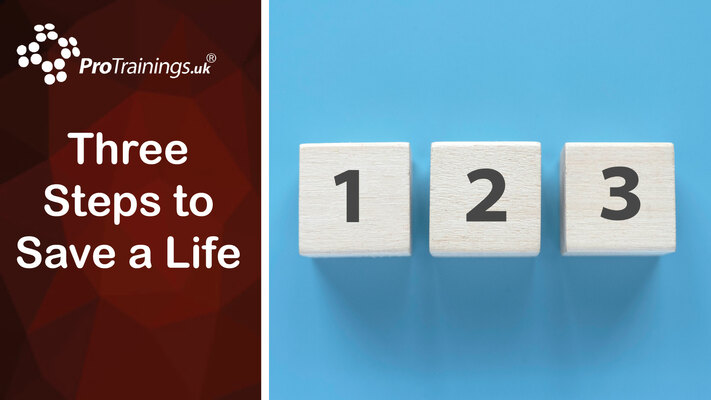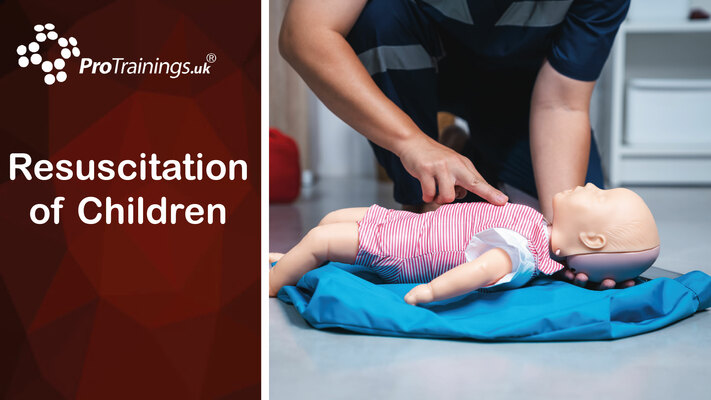Sports First Aid Level 3 (VTQ) Training Videos
It is vital to have a trained first aider in sports activities. When playing sports, people face a number of physical risks including sprains, dislocation, fractures, asthma attacks, cardiac arrest and other possible life-threatening injuries. This Sports First Aid training course will give you all the necessary first aid skills to deal with emergencies and save a life! Start your training now!
Introduction to Sports First Aid
To Introduce you to your ProTrainings Sports First Aid course this section contains a short course introduction and overview followed by a look into some common sporting injuries.
Initial Care and Safety
In this section, we look at the fears of first aid, asking permission to help and consent in first aid, how to take vital signs, and activate the Emergency Medical Services (E.M.S). You will learn the Chain of Survival and the use of personal protective equipment (PPE), including face shields and Bag Valve Masks, before learning how to carry out an initial assessment and place a casualty in the recovery position following a sporting accident.
Cardiac Arrest and CPR
This section covers CPR, how to identify when it is needed, and procedures to carry out CPR on both adults and children, including hands only CPR and handing over to a second rescuer. There is information on how to improve your CPR compressions and breaths and how to deal with drowning, including near and secondary drowning. We introduce you to the AED, Automated External Defribulator, and how it can help a patient in cardiac arrest.
Choking Management
In this section, we cover how to recognise and deal with choking in both adults and children.
Bleeding Management
In this section, we look at the different types of bleeding, including serious bleeds, how to treat excessive blood loss, and bleeding control. Following on from bleeding we cover embedded objects, nose bleeds, minor and other injuries, as well as the use of plasters and the healing process after an injury.
Injuries
We cover a number of injuries in this section and how to recognise and treat them. This includes strains, sprains, fractures and dislocations, and how to use splints, Aircast Boots, and kinesiology tape. We look at the different types of head injury and concussion specifically, the concussion memory test and withdrawal from play as well as the different types of helmets. You will learn about spinal injuries and the spinal recovery position, and eye injuries, specifically embedded objects in the eye, before we move on to burns. When we learn about burns we look at the different kits and dressings available as well as the use of cling film to treat a burn in an emergency. Heat and Cold Emergencies, including frostbite and frostnip, are covered before moving on the shock and fainting. We look at common sporting injuries, such as, dental injuries, cramps and blisters, and more serious injuries to the chest and abdomen, Finally, you will learn about the importance of hydration and the different products available.
Illnesses
This section covers illnesses, starting with the signs and symptoms of different illnesses, allergies, medications, and pre-existing conditions a casualty may have. You will learn how to recognise a stroke, allergic reactions, and anaphylaxis and the appropriate action to take. Diabetes and asthma can be common problems and we will look at how they may become a medical emergency and why early treatment is important, including the use of asthma inhalers, spacers, and Accuhaler. Not all seizures are epileptic but it is important to understand epilepsy and how to recognise and deal with a seizure. Although not necessarily illnesses we cover electrical injuries and hyperventilation in this section so you have full knowledge and understanding of the situations you may encounter that require first aid assistance.
Summary
To finish your training, this section covers the use of medications in first aid and a brief summary before you take your final test.
Course Details
4 hours and 40 minutes
English
Keith Sleightholm
English
Sports First Aid Level 3 (VTQ) at a Glance
- Includes the latest CPR and Coronavirus recommendations
- Learn first aid problems that can arise with any sport
- Ideal for many different sports at professional, club and hobby levels
- Includes various injuries and illnesses that you may encounter
- Follows the latest UK and European Resuscitation Council guidelines
- Can be completed 100% online or contact us for a practical course locally
- Course ideal to be completed in a blended format, complete this course then a class course locally saving time in the classroom



























































































